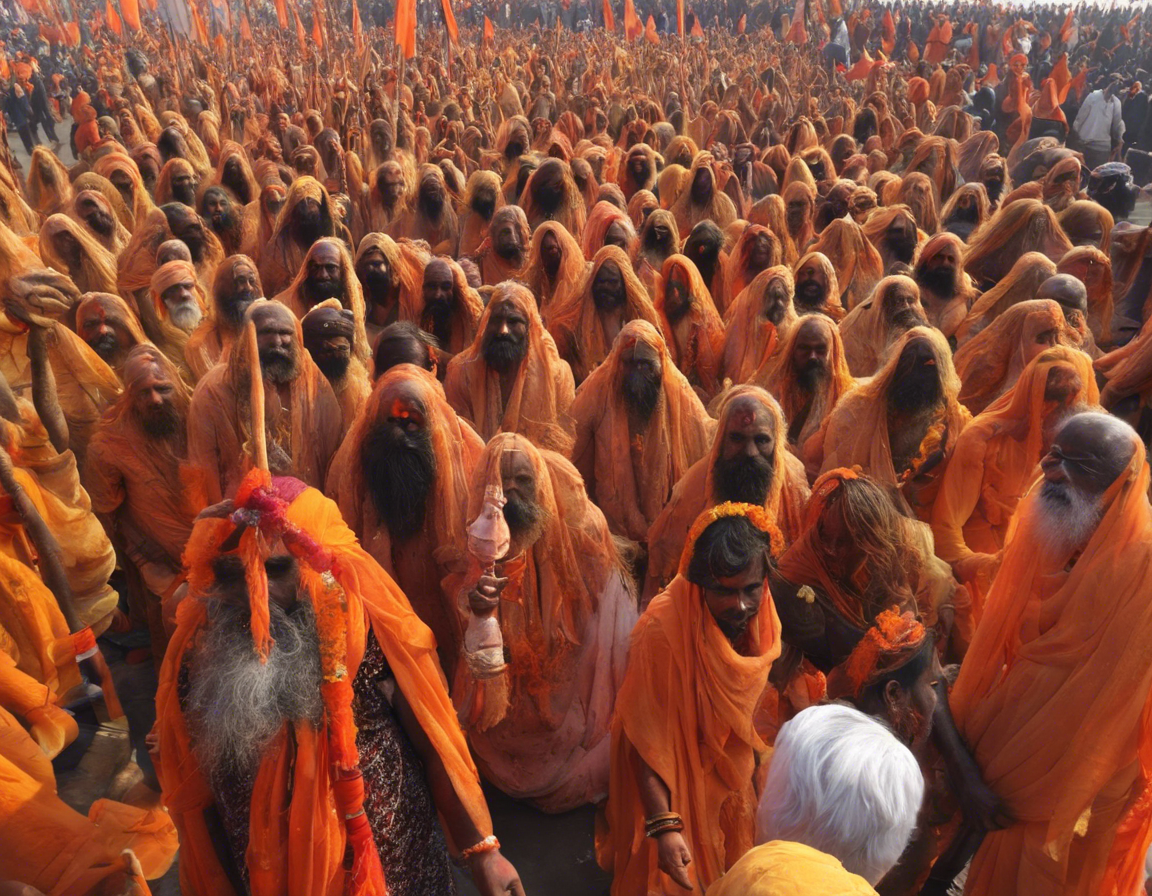Introduction Every 12 years, millions of pilgrims, saints, and seekers flock to the sacred waters of the Ganges River in India for the Kumbh Mela – th
Introduction
Every 12 years, millions of pilgrims, saints, and seekers flock to the sacred waters of the Ganges River in India for the Kumbh Mela – the world’s largest spiritual gathering. This ancient Hindu festival dates back thousands of years and holds immense cultural and religious significance. Let’s delve into the mystical and awe-inspiring world of the Kumbh Mela, where spirituality, tradition, and devotion converge.
A Convergence of Faith
The Kumbh Mela is a celebration of spiritual renewal and divine intervention. The word “Kumbh” refers to the traditional pot that contains the nectar of immortality in Hindu mythology, and “Mela” means a fair or gathering. The festival rotates between four sacred locations in a cycle of 12 years – Haridwar, Prayagraj (formerly Allahabad), Nashik, and Ujjain. Each site has its unique spiritual significance and hosts the event based on astrological positions.
Rituals and Traditions
The Kumbh Mela is not just a festival; it’s a deeply ingrained spiritual experience. Pilgrims embark on long journeys to take a dip in the holy waters, which is believed to cleanse them of sins and bestow blessings. The main ritual, known as the “Shahi Snan” or Royal Bath, is the most auspicious time to bathe in the river according to astrological alignments. The sight of millions of devotees immersing themselves in the river is both mesmerizing and humbling.
The Naga Sadhus – Ascetics of the Kumbh Mela
One of the most captivating aspects of the Kumbh Mela is the presence of the Naga Sadhus – a sect of revered ascetics known for their renunciation of worldly possessions and profound spirituality. These wandering sadhus join the festival in large numbers, often performing awe-inspiring feats of strength and endurance. Their naked bodies covered in ash, long matted hair, and unique rituals make them a central attraction of the event.
The Spiritual Marketplace
Beyond the rituals and ceremonies, the Kumbh Mela is a vibrant hub of spiritual discourse and exchange. Akharas, or spiritual camps, serve as gathering points for different sects and orders of sadhus. Here, philosophical debates, meditation sessions, and spiritual discourses take place, offering seekers a chance to deepen their understanding of various spiritual teachings.
Impact and Significance
The Kumbh Mela is not just a religious event; it’s a cultural phenomenon that transcends boundaries. The gathering showcases the unity in diversity of India’s spiritual traditions and serves as a reminder of the country’s rich cultural heritage. It also provides a significant boost to local economies, with millions of visitors contributing to the growth of businesses and tourism in the region.
Preserving Tradition in a Modern World
As modernization encroaches upon ancient traditions, the challenge lies in preserving the authenticity and sanctity of events like the Kumbh Mela. Efforts are being made to maintain the ecological balance of the river, ensure the safety and well-being of pilgrims, and uphold the traditional rituals that have been passed down through generations. Balancing tradition with modernity is crucial to safeguarding the essence of such sacred gatherings.
Sustainability and Environmental Impact
The massive scale of the Kumbh Mela inevitably raises concerns about its environmental impact. The influx of millions of people, temporary infrastructure, and waste generation pose challenges to the delicate ecosystem of the river and surrounding areas. Initiatives for sustainable practices, waste management, and eco-friendly solutions are being implemented to minimize the festival’s environmental footprint and preserve the sanctity of the Ganges.
Frequently Asked Questions (FAQs)
- What is the significance of taking a dip in the holy waters during the Kumbh Mela?
-
Bathing in the sacred rivers during the Kumbh Mela is believed to cleanse one of sins and fulfill spiritual aspirations.
-
How often does the Kumbh Mela take place, and where are the main sites located?
-
The Kumbh Mela occurs every 12 years in a rotational cycle between Haridwar, Prayagraj, Nashik, and Ujjain.
-
Who are the Naga Sadhus, and why are they a central part of the Kumbh Mela?
-
Naga Sadhus are revered ascetics who renounce worldly possessions and symbolize detachment and spiritual purity. They add an aura of mysticism to the festival.
-
What role do the Akharas play during the Kumbh Mela?
-
Akharas are spiritual camps where different sects and orders of sadhus gather for philosophical discussions, debates, and spiritual practices.
-
How does the Kumbh Mela contribute to the local economy and tourism in the region?
-
The influx of millions of pilgrims and tourists during the Kumbh Mela boosts local businesses, generates employment, and promotes tourism in the host cities.
-
What measures are being taken to address the environmental impact of the Kumbh Mela?
- Sustainable practices, waste management initiatives, and eco-friendly solutions are being adopted to mitigate the festival’s environmental impact and protect the ecosystem.
In conclusion, the Kumbh Mela is not just a gathering; it’s a profound spiritual journey that transcends time and space, connecting millions of souls in a tapestry of faith and devotion. As the world marvels at this grand spectacle of spirituality, it serves as a poignant reminder of the enduring power of tradition and the eternal quest for transcendence.


COMMENTS